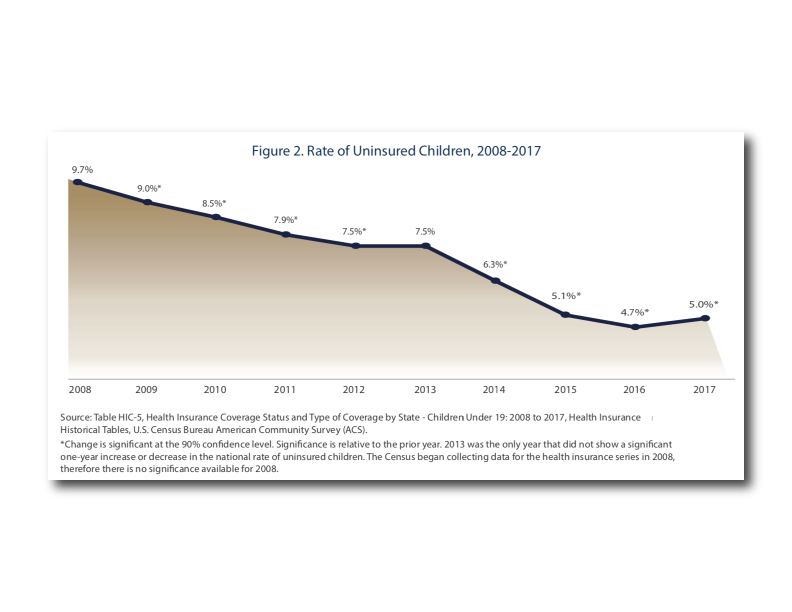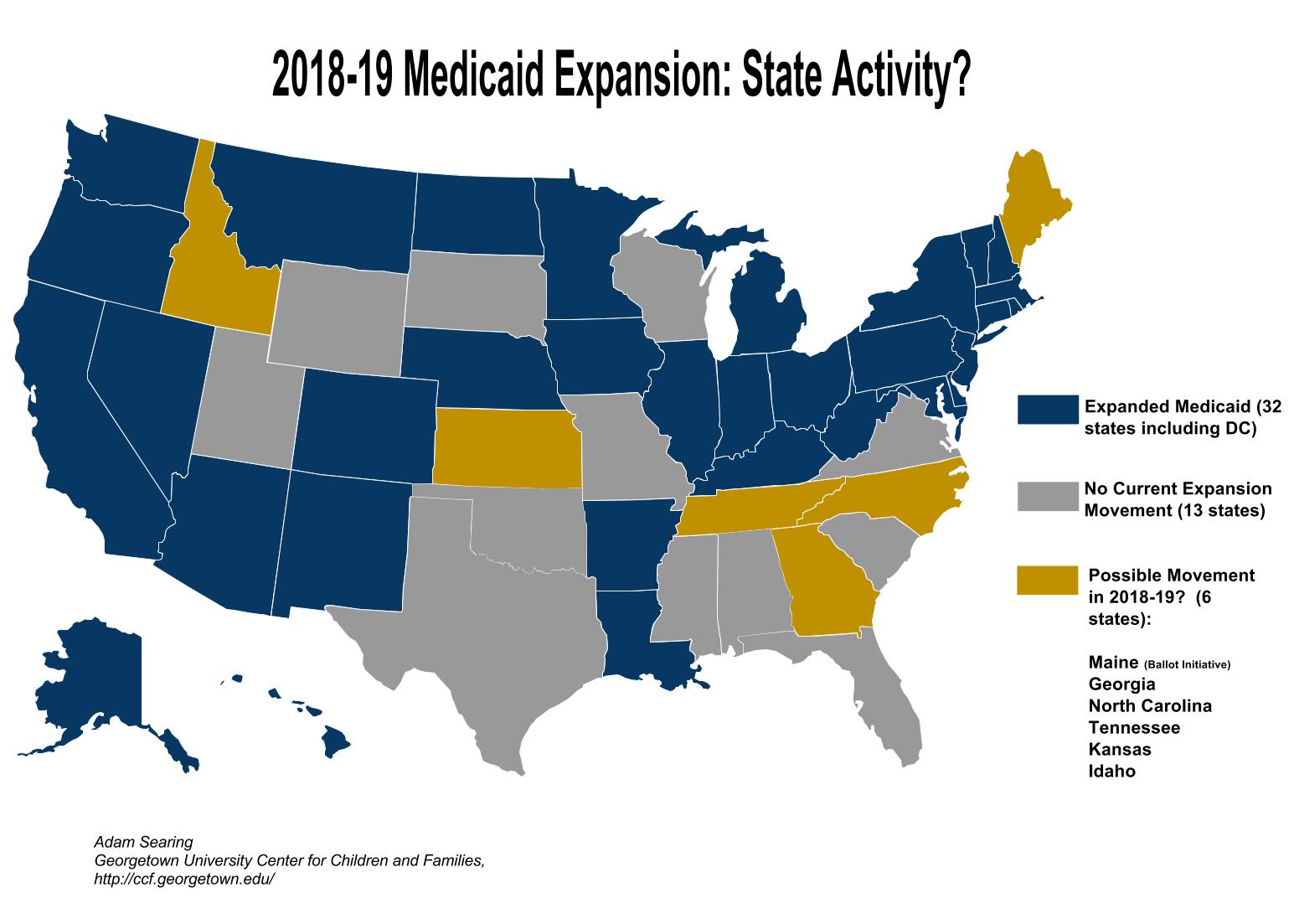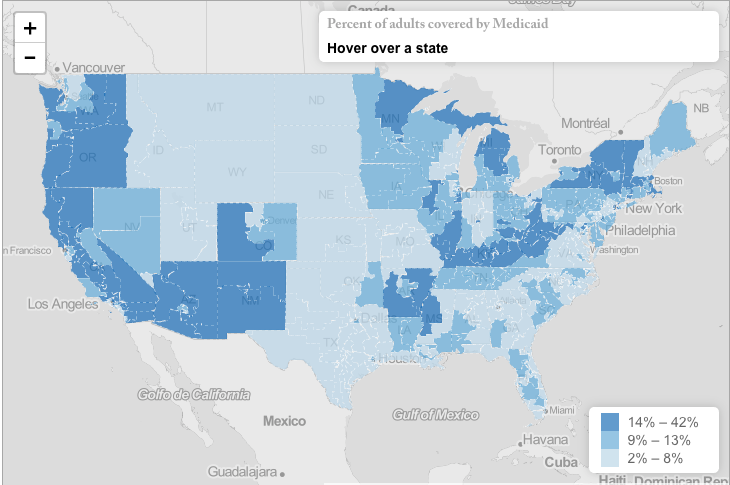Tennessee
-
National Decline in Child Enrollment in Medicaid and CHIP Slows but Steep Declines Continue in Problem States
In the first four months of 2019, overall child enrollment in Medicaid and CHIP dropped by 122,000 children with declines in 31 states offset by gains in 20 states. As noted in previous blogs and this report, the largest declines are occurring in a handful of states. States with the Largest Percentage Decline – In…
-
New Data Show Widespread Decline in Child Enrollment in Medicaid/CHIP Coverage in 2018
We’ve been anxiously awaiting the release of final Medicaid and CHIP enrollment data for 2018, which was expected to be posted almost a month ago. The wait is finally over but not our concerns about what’s happening. In the meantime, more stories about eligibility system issues in a handful of states and states conducting more…
-
Who’s Minding the Store for Tennessee Children Relying on Medicaid and CHIP?
When I began my career as a children’s advocate in the 90s, Tennessee led the nation in the percentage of its children with health insurance. It was a proud moment for our poor Southern state that was brought about by the vision and political effectiveness of Democrat Governor Ned Ray McWhether and by the courage…
-
CMS Weighing Decision that Would Lead to Loss of Health Coverage for Thousands of Tennessee Families Living in Poverty
Tennessee, a state that has not accepted the option to expand Medicaid to more low-income adults, has become the fifth state to ask CMS to impose a work or community service reporting requirement on parents with incomes at or below 98% of the federal poverty level. South Carolina is next in the queue. If the…
-
Work Reporting Requirement for Tennessee Parents Would Harm Low-Income Families with Children
Introduction Tennessee is seeking federal permission to impose a work reporting requirement on low-income parents and caregivers receiving health coverage through Medicaid. Under the proposal, these beneficiaries ages 19 to 64 would have to document that they are working at least 20 hours a week or participating in job-training, education, or volunteer activities in order…
-
2016 Maps
The interactive maps and data for 2016 provide information on the percent of adults and children covered by Medicaid and/or CHIP.You can embed these maps on your website by selecting a state on the left then copying the embed code on the right side of the map and pasting it into a post on your…
-
Five States Saw Uninsured Rates Rise for Kids Under 6 – Critical Early Development Years at Risk
We have been digging deeper into the American Community Survey that we use for our annual uninsured report, which showed an increase overall for the first time since this data source began in 2008. Younger kids tend to have a higher rate of coverage than older kids, which makes sense as infants and toddlers are…
-
Surprising drop in the number of Tenn. kids covered by health insurance
WMOT By: Mike Osborne A new study shows an alarming drop in the number of children covered by health insurance, and Tennessee is singled out in the report as one of the worst cases. The Georgetown University Center for Children and Families says the number of uninsured children rose in 2017 after eight years of…
-
Nation’s Progress on Children’s Health Coverage Reverses Course
Introduction For the first time since comparable data was first collected in 2008, the nation’s steady progress in reducing the number of children without health insurance reversed course. The number of uninsured children under age 19 nationwide increased by an estimated 276,000 to about 3.9 million (3,925,000) in 2017, according to newly-available data from the…
-
New Policy Brief asks: “Why are Tennessee moms and babies dying at such a high rate?”
Tennessee Justice Center’s recent policy brief focuses on rising rates of infant and maternal mortality in Tennessee. When I saw the state’s dismal outcomes in the 2018 America’s Health Rankings Health of Women and Children report, I immediately wanted to learn why moms and babies were dying at higher and higher rates in Tennessee. According…
-
Teens Discover Peer-to-Peer Outreach Works to Connect More Students with Health Coverage
This year the Tennessee Justice Center launched a Student Ambassador Program to engage young people in our Insure Our Kids Campaign. This campaign seeks to get every eligible child in Tennessee enrolled in health insurance coverage by educating the community and providing enrollment assistance. To find and enroll those uninsured students, we turned to their…
-
As other Republican states pass Medicaid expansion, a question remains: Why not Tennessee?
Nashville Tennessean By: Natalie Allison Flown in to Nashville Thursday from Washington, D.C., the panelists on stage at Vanderbilt’s John Seigenthaler Center could offer statistics, economic projections and examples to support the benefit of states adopting Medicaid expansion. Roughly 300,000 uninsured adults in Tennessee — tens of thousands of whom are veterans — could be covered under…
-
State Medicaid and CHIP Snapshots, 2018
The Georgetown University Center for Children and Families (CCF) and the American Academy of Pediatrics (AAP) created factsheets underscoring the importance of Medicaid in providing coverage for children in all 51 states (including the District of Columbia). Sources are available here. Previous snapshots can be found here.
-
Nationwide Rate of Uninsured Children Reaches Historic Low
Nationwide 95.5 percent of children had health insurance in 2016, up from 95.2 percent the previous year—and up from 92.9 percent in 2013, the year before the ACA was fully implemented. While relatively few children rely on the ACA’s Marketplace for insurance, many gained coverage in Medicaid or CHIP when their parents signed up for…
-
Section 1115 Medicaid Waiver Comments
Georgetown University’s Center for Children and Families contributes an independent perspective to the public dialogue on the future of Medicaid through the lens of children and their families.
-
Medicaid’s “Welcome Mat” Effect Means Medicaid Expansion Helps Children Get Health Coverage
New research in the journal Health Affairs this month gives even more evidence for a parental “welcome mat” effect that increases health coverage among children already eligible for Medicaid or the Children’s Health Insurance Program when their parents become eligible as well. Simply put, moving to “whole family coverage” through a state Medicaid expansion or…
-
State CHIP Snapshots
The Role of CHIP in Children’s Coverage In 2016 the children’s health insurance coverage rate in the United States dropped to just above 95 percent, an impressive achievement. Key to this success is the Children’s Health Insurance Program, which provides coverage to children who do not qualify for Medicaid but whose families cannot otherwise afford…
-
States Battling Opioid Epidemic Will Face Tougher Times if Medicaid is Cut
As readers of SayAhhh! already know, the bill passed by House Republicans and currently under secret consideration by Senate Republicans – the American Health Care Act (AHCA) – would limit federal funding to states for Medicaid. The funding limits, known as a per capita cap, would shift all of the risk inherent in health insurance…
-
INTERACTIVE MAPS: Children Covered by Medicaid and CHIP by county, state or congressional district.
These maps show how many children are covered by Medicaid in each county and congressional district. Visit these links to view the maps, and to download handouts on your state’s coverage data: Percent of Children Covered by Medicaid/CHIP (congressional district) Percent of Children Covered by Medicaid/CHIP (county) Visit CCF’s State Resource Center for state-level data on health…
-
Missing Out On New Health Coverage: Four States Where The Debate Around The GOP’s Health Care Bill Is Hurting Efforts To Close The Medicaid Coverage Gap
While the ultimate outcome for the GOP health care bill is unclear here in Washington, the uncertainty created by the legislation is already having an adverse effect on attempts to expand coverage in four states. Idaho, Georgia, Tennessee, and Kansas all have had robust discussions over the past year about joining the other 32 states…


















